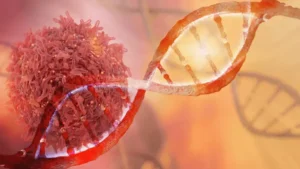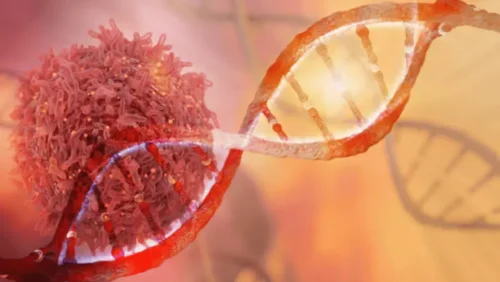
The ASIR showed a steeper rise in females (9.6%) compared to males (7.0%). Etiology-specific analysis revealed an increase in the ASIR for MASLD related cirrhosis and other chronic liver disease by 22.2%, while those due to alcohol as well as hepatitis B and C decreased by 28.1%, 59.3%, and 30%, respectively. Despite the rising incidence, overall age-standardized death rates across all etiologies decreased by 54.3%, with DALYs showing a 51.4% decrease during the same period. Country-specific trends varied significantly, with Oman recording the highest annual ASIR increase (0.64%), and Qatar observing the most substantial annual reduction in age-standardized death rates (-2.88%).
Initial Treatment for Early Alcoholic Liver Disease
The signs and symptoms of ALD can vary significantly depending on the severity of liver damage. Patients with alcohol-related fatty liver disease, for example, usually do not have any symptoms. However, about 18 million adult Americans have an alcohol use disorder (AUD). A team of healthcare providers, which may include psychologists or addiction specialists, can help if you find it challenging Why Alcoholism is Considered a Chronic Disease to stop drinking.

What are the risk factors for alcohol use disorder?
A recent review of studies assessing the cost-effectiveness of continuing care (Popovici et al. 2007) concluded that continuing care models encompassing different treatment modalities can be cost-effective and can yield a cost benefit. However, only a few studies to date have addressed this issue, and all of these had significant limitations. Thus, additional studies looking at the cost-effectiveness and cost benefit of various continuing care models are urgently needed. Several treatment options and interventions can help a person recover from alcohol dependence. Once a person stops using alcohol, they can often experience recovery from symptoms, though in some cases, some damage may be permanent. Alcohol misuse can lead to neurological damage that can affect multiple areas of a person’s health and well-being.
- Under the direction of licensed therapists or counselors, behavioral therapies involve psychological strategies to modify drinking behaviors.
- The condition is likely the result of a combination of genetic, social, psychological, and environmental factors.
- Baclofen has evidence of safety and efficacy in AUD and is the only pharmacotherapy with randomised controlled trial evidence in ALD, including in patients with cirrhosis 79–81.
- Ultimately, the best way to prevent alcohol-related neurologic disease is to not drink alcohol.
- Like treatment for other chronic diseases such as heart disease or asthma, addiction treatment is not a cure, but a way of managing the condition.
- Effective prevention and early detection are pivotal in the management of chronic liver diseases (CLD), necessitating robust screening protocols.
Support for People With Alcoholism
Thus, researchers and clinicians have begun to develop alternative approaches to enhance treatment retention in both initial and continuing care. One focus of these efforts has been the design of extended treatment models. These approaches increasingly blur the distinction between initial and continuing care and aim to prolong treatment participation by providing a continuum of care. Testing for biomarkers of alcohol consumption can aid in diagnosis and follow-up of ALD by providing objective information about alcohol intake, in addition to self-report. Biomarkers are often used as part of screening of LT candidates, and when monitoring for relapse in the post-LT setting 93. Indirect biomarkers of alcohol consumption include the commonly measured and inexpensive liver function tests γ-glutamyltransferase (GGT), AST, ALT, as well as mean corpuscular volume (MCV) and percentage carbohydrate-deficient transferrin (CDT) 94.

This approach is underpinned by the cost-effectiveness of screening and the advent of direct-acting antiviral (DAA) agents for hepatitis C treatment 31. Similarly, screening for MASLD in primary care settings targets individuals with metabolic risk factors and/or type II diabetes mellitus, reflecting a proactive stance towards early identification and management 32. However, the MENA region exhibits a notable scarcity in screening recommendations and implementation for at-risk populations, highlighting a critical gap in CLD prevention strategies. Bridging this gap requires leveraging the successes and lessons learned from the US and other regions to tailor and implement effective screening protocols within MENA, accommodating the unique healthcare infrastructure and population health needs of the region. People who drink too much alcohol are at risk of developing a host of health conditions and disorders including certain types of cancer, liver disease, and heart disease.
What Are the Types of Treatment for Alcohol Use Disorder?
Alcohol use disorder can include periods of being drunk (alcohol intoxication) and symptoms of withdrawal. In the DSM-5, alcohol use disorder is further classified into categories of mild, moderate, and severe. Other early signs of alcoholism include blackout drinking or a drastic change in demeanor while drinking, such as consistently becoming angry or violent. ALD comprises a broad spectrum of disease ranging from asymptomatic isolated steatosis to steatohepatitis with or without fibrosis through to advanced cirrhosis (Fig. 1).


